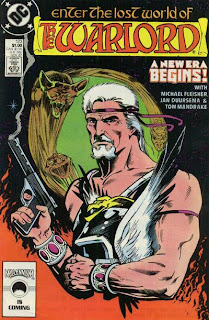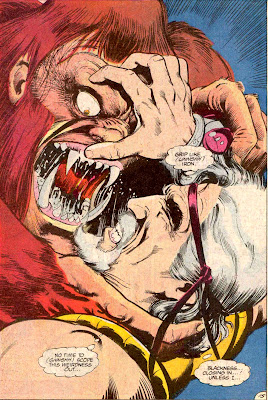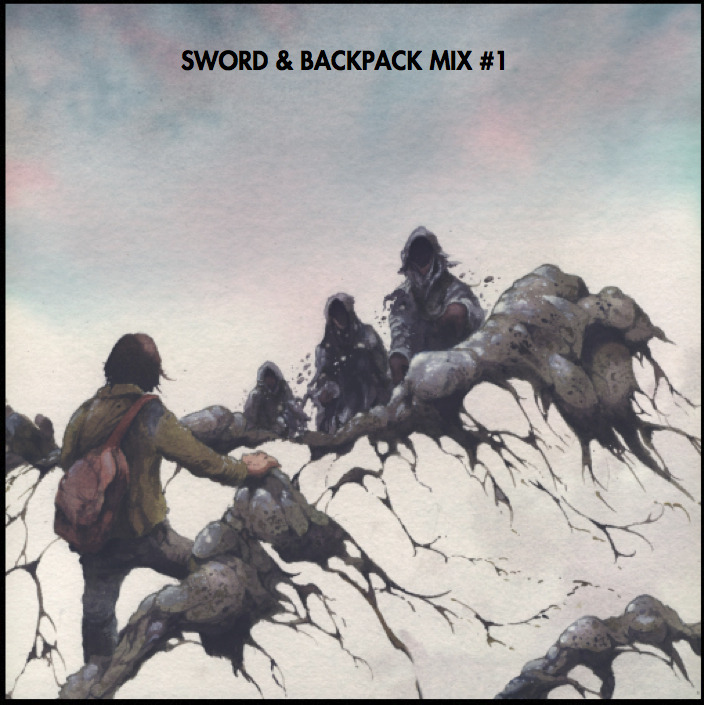Warlord #123 (November 1987)
Written by Michael Fleisher; Pencils by Jan Duursema, Inks by Tom Mandrake
Synopsis: In some extradimensional prison-realm, three formerly human, demonic entities sense their time to plunge Skartaris into eternal darkness is near. In their ghostly forms, they swirl around a crystal that holds their master, who only awaits their incantations to be reborn.
In Shamballah, Tara and Morgan are listening to the story of Kara and Jennifer’s story of their encounter with Azmyrkon. Suddenly, the eternal sun of Skartaris is eclipsed by the moon—a very rare event, and one that fills Tara with dread.
In the sewers beneath of the Shamballan slums, Redmond is waking up with a “I turn into a Sasquatch monster and kill stuff” hangover. His stolen pills are keeping him human shorter and shorter periods--and he’s more bestial now when he becomes the monster. He doesn’t even know what sort of animal he last ate. Wait, what’s that in the pile of bones?
Redmond turns back into the monster, bursts up through the street, and goes on a rampage. News of the panic in the street reaches the palace. Morgan puts on his best gold mail muscle shirt and heads out to see what’s going on.
When Morgan gets to the poor part of town, he's accosted by a group of thugs. He makes short work of them, but while he’s in the midst of melee, Redmond sees him.
Redmond rants about taking him back to face a military tribunal for being a commie spy. Morgan realizes that the CIA agents travails in Skartaris have driven him from fanatic into complete insanity. Morgan begins to offer him help, but then Redmond transforms into the monster.
While Redmond and Morgan fight across the city, Tara and her soldiers defend the palace and the newly arrived refugees against the fear-maddened Shamballan mobs. In the nether-realm, the crystalline egg begins to hatch as the inhuman sorcerers continue their mystic chanting.
A volcano erupts near Shamballah. The shaking of the earth causes Morgan and Redmond to fall from a bridge. Lava flows beneath them. Morgan holds on with one hand, attempting to save both of them. The creature that was Redmond, however, can’t let go his savage hate. Morgan has no choice:
His enemy dead, Morgan crawls back up to the end of the bridge and looks out over a city in flames!
Things to Notice:
- And so, Redmond meets an ignoble end.
- Since when is there a volcano near Shamballah?
Notes:
This issue brings Redmond's quest to an unceremonious and sort of anticlimatic end. The new villians are intriguing and more sword & sorcery than what we've seen in a while.
This issue brings Redmond's quest to an unceremonious and sort of anticlimatic end. The new villians are intriguing and more sword & sorcery than what we've seen in a while.


























